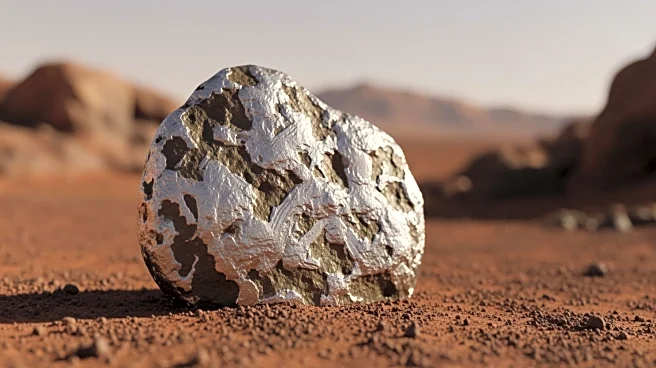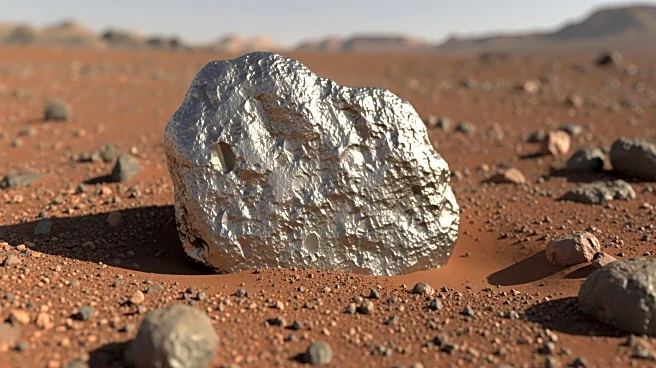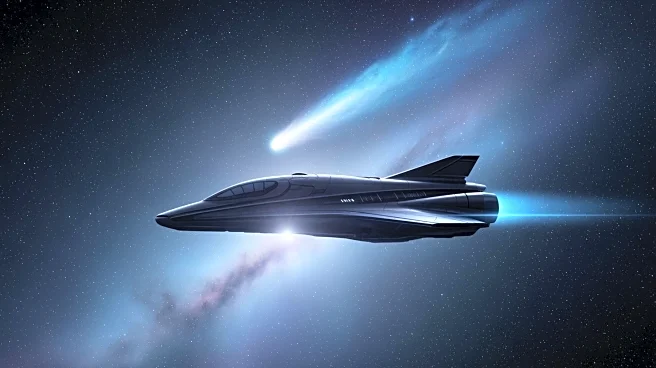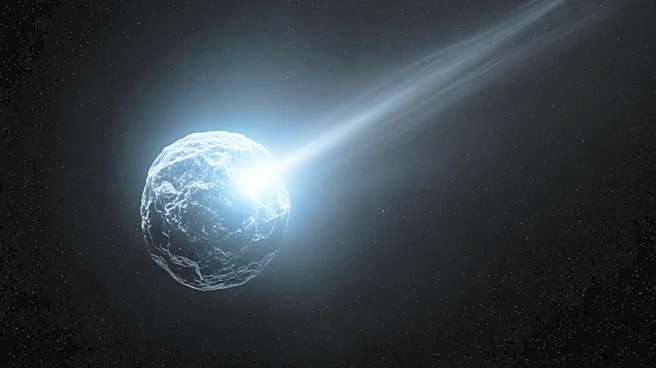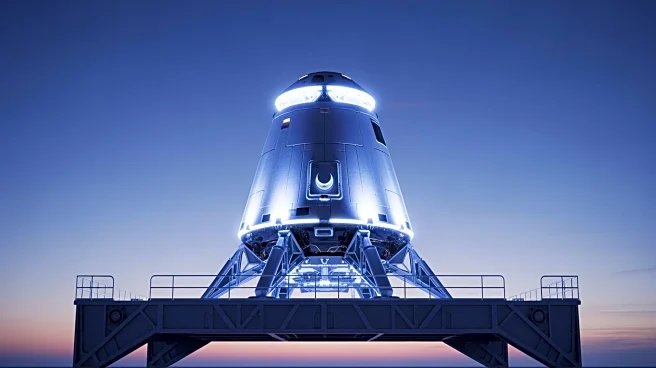What's Happening?
NASA's Perseverance rover has discovered a meteorite on Mars, marking a significant find during its mission in the Jezero crater. The rock, named 'Phippsaksla,' is composed of iron and nickel, elements
typically found in meteorites rather than Martian rocks. This discovery is notable as it is the first meteorite found by Perseverance, despite previous missions by other rovers like Spirit, Opportunity, and Curiosity encountering similar space rocks. The meteorite's presence on Mars suggests it originated elsewhere in the solar system, potentially millions or billions of years ago. The announcement of this discovery was delayed due to the recent U.S. government shutdown, which affected NASA's operations.
Why It's Important?
The discovery of a meteorite on Mars by the Perseverance rover is crucial for understanding the planet's geological history and the solar system's dynamics. Meteorites can provide insights into the materials and conditions present in the early solar system, offering clues about planetary formation and evolution. For scientists, studying such meteorites can enhance knowledge about Mars' past, including potential signs of life. This find also underscores the importance of continued exploration and research on Mars, as each discovery contributes to the broader understanding of extraterrestrial environments and the potential for life beyond Earth.
What's Next?
Following the discovery, NASA scientists are likely to conduct further analyses on the meteorite to determine its exact age and origin. This could involve comparing its composition with known meteorites on Earth to trace its journey through space. The Perseverance rover will continue its mission, exploring the Jezero crater for more signs of past life and geological activity. The findings may prompt additional studies or missions focused on meteorite impacts on Mars, potentially leading to new insights into the planet's history and its role in the solar system.
